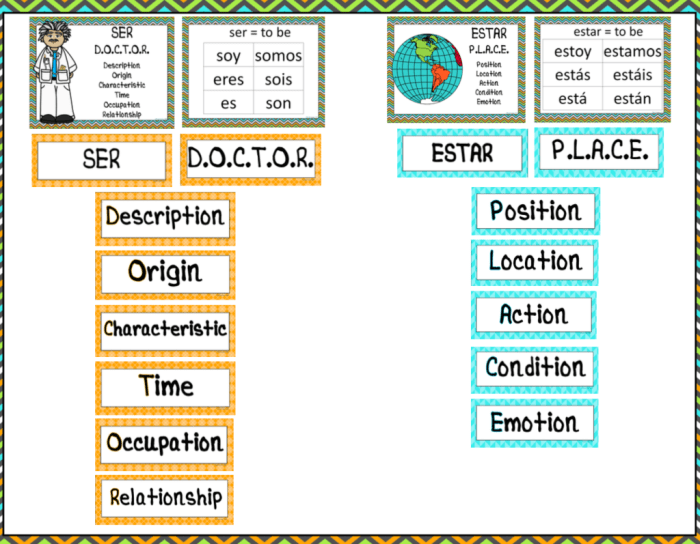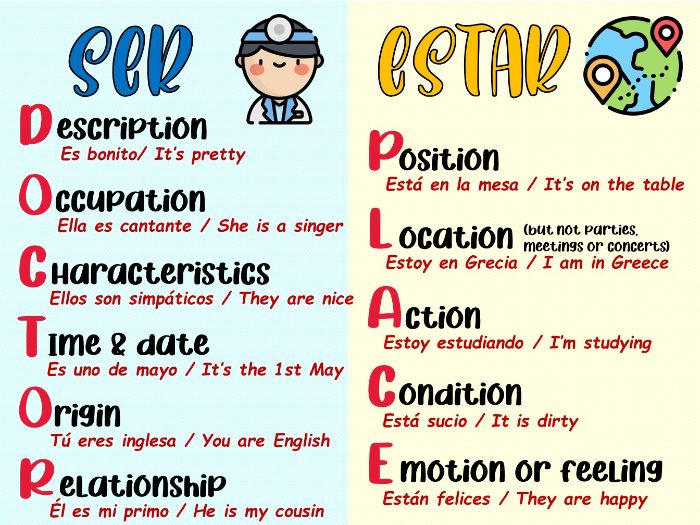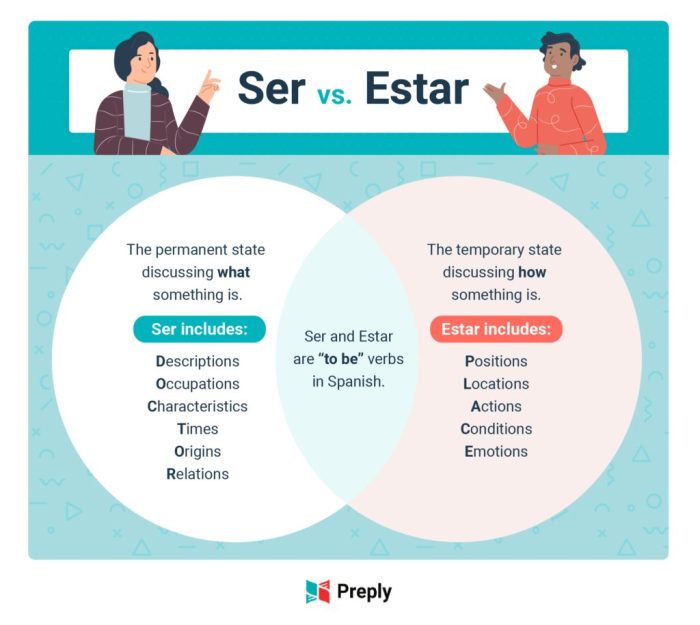Stop the elf ser vs estar – With “Stop the Elf: Ser vs Estar” at the forefront, this guide opens a window to an amazing start and intrigue, inviting readers to embark on a storytelling journey filled with unexpected twists and insights.
The content of the second paragraph that provides descriptive and clear information about the topic
Ser vs. Estar

In Spanish, “ser” and “estar” are two verbs that are often confused, but they have different meanings and uses. “Ser” is used to describe essential qualities or characteristics that are inherent to a person or thing, while “estar” is used to describe temporary states or conditions.
General Rules for Using “Ser” and “Estar”, Stop the elf ser vs estar
Here are some general rules for using “ser” and “estar”:
- “Ser” is used to describe permanent or essential qualities, such as nationality, profession, or personality traits.
- “Estar” is used to describe temporary states or conditions, such as location, physical or emotional state, or actions in progress.
For example, you would use “ser” to say “Soy español” (I am Spanish) because your nationality is a permanent characteristic. However, you would use “estar” to say “Estoy en España” (I am in Spain) because your location is a temporary state.
Distinguishing Between Permanent and Temporary States

The distinction between serand estarbecomes particularly important when describing qualities or states of being. Seris used to describe permanent or essential qualities, while estaris used to describe temporary or changing states.
Enough about the ser vs. estar debate for now! Let’s take a break and learn how to change your Vocera name. It’s as easy as following these simple steps outlined in this helpful guide: how to change vocera name . Once you’re done, you can get back to mastering ser vs.
estar with renewed vigor!
Permanent Qualities
Seris used to describe qualities that are inherent to a person or thing. These qualities are considered to be fixed or unchanging, and they often relate to one’s identity, personality, or physical characteristics.
- Soy alto.(I am tall.)
- Ella es inteligente.(She is intelligent.)
- Este coche es rojo.(This car is red.)
Temporary States
Estaris used to describe states that are temporary or changeable. These states can include emotions, physical conditions, or locations.
- Estoy cansado.(I am tired.)
- Ella está enferma.(She is sick.)
- El coche está en el garaje.(The car is in the garage.)
Ser and Estar with Adjectives and Nouns

Ser and Estar with Adjectives
Both serand estarcan be used with adjectives, but they have different meanings.
Seris used to describe permanent or essential qualities of a person or thing.
Soy alto.(I am tall.)
Eres inteligente.(You are intelligent.)
La casa es grande.(The house is big.)
Estaris used to describe temporary states or conditions of a person or thing.
Estoy cansado.(I am tired.)
Estás enfermo.(You are sick.)
La casa está vacía.(The house is empty.)
Ser and Estar with Nouns
Seris used with nouns to indicate identity or origin.
Yo soy profesor.(I am a teacher.)
Tú eres español.(You are Spanish.)
La casa es de madera.(The house is made of wood.)
Ser and Estar in Time Expressions

Ser and estar play distinct roles in expressing time-related concepts. Let’s explore their usage and provide examples to illustrate their differences.
Ser for Time of Day, Date, and Season
Ser is used to indicate:
- Time of day: Son las tres de la tarde.(It is three o’clock in the afternoon.)
- Date: Hoy es el 10 de marzo.(Today is March 10th.)
- Season: Ahora es primavera.(It is spring now.)
Estar for Location or Position in Time
Estar is used to express:
- Location in time: Estamos en el año 2023.(We are in the year 2023.)
- Position in time: El concierto está a punto de comenzar.(The concert is about to start.)
Advanced Usage of Ser and Estar: Stop The Elf Ser Vs Estar

Idiomatic Expressions with Ser and Estar
Both “ser” and “estar” are used in various idiomatic expressions that convey specific meanings and nuances. Here are a few examples:
- Ser una persona mayor– To be an elderly person
- Estar en las nubes– To be daydreaming
- Ser un niño grande– To be immature for one’s age
- Estar en forma– To be physically fit
- Ser un sabelotodo– To be a know-it-all
Ser and Estar in Passive Voice Constructions
In Spanish, the passive voice is formed using the verb “ser” followed by the past participle of the main verb. The subject of the passive voice construction is the recipient of the action, and the agent (the one performing the action) is often omitted.
Example:
- La casa fue construida en 1950.– The house was built in 1950.
Examples of Advanced Usage
Here are some examples that demonstrate the advanced usage of “ser” and “estar”:
- Ser una persona muy trabajadora.– To be a very hardworking person.
- Estoy muy cansado hoy.– I am very tired today.
- La casa fue construida por un famoso arquitecto.– The house was built by a famous architect.
- El libro está sobre la mesa.– The book is on the table.
- Soy un estudiante de español.– I am a Spanish student.
Common Mistakes and Tips

Using “ser” and “estar” correctly is essential for effective Spanish communication. Here are some common mistakes to avoid:
Mistaking “ser” for “estar” when describing temporary states:
- Incorrect: Estoy cansado. (I am tired.)
- Correct: Soy cansado. (I am a tired person.)
Using “estar” for permanent characteristics:
- Incorrect: Soy alto. (I am tall.)
- Correct: Estoy alto. (I am standing tall.)
Here are some tips to help you use “ser” and “estar” correctly:
- Remember that “ser” is used for permanent or essential qualities, while “estar” is used for temporary or changing states.
- Pay attention to the context and the meaning you want to convey.
- Practice using both verbs in different situations to improve your understanding.
To summarize the key differences between “ser” and “estar”:
| Ser | Estar | |
|---|---|---|
| Use | Permanent or essential qualities | Temporary or changing states |
| Examples | Soy inteligente. (I am intelligent.) | Estoy cansado. (I am tired.) |
FAQ Overview
What is the difference between ser and estar?
Ser is used to describe permanent or essential qualities, while estar is used to describe temporary or changing states.
How do I use ser with adjectives?
Ser is used with adjectives to describe inherent qualities, such as personality traits or physical characteristics.
How do I use estar with time expressions?
Estar is used with time expressions to indicate location or position in time.